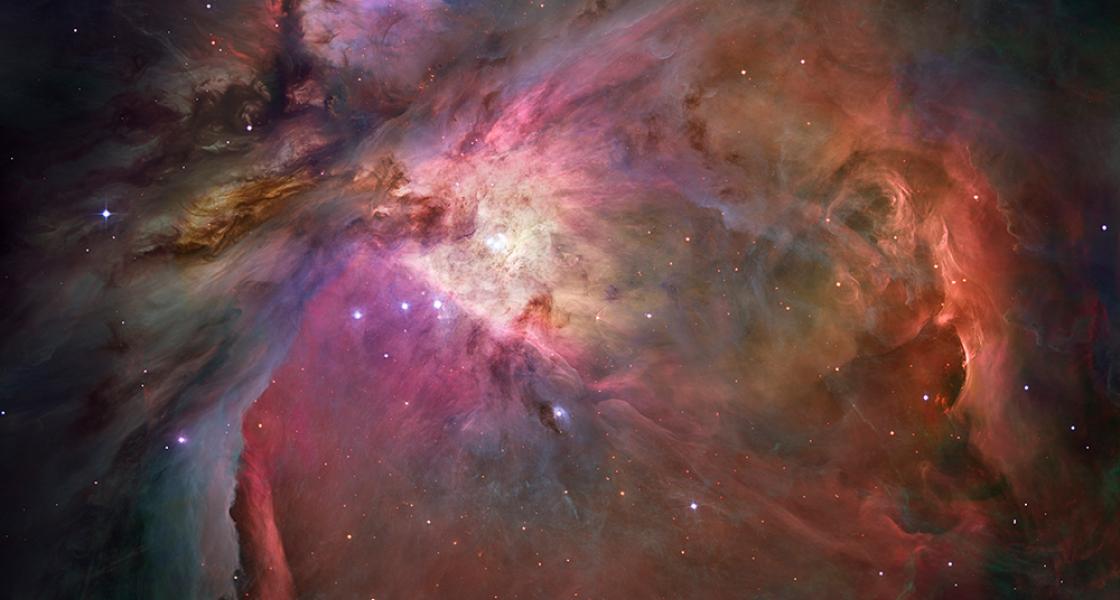The Nesbitt group wants to figure out how chemistry works in outer space. In particular, the group wants to understand the “cosmo”-chemistry leading to the generation of soot, which is similar to products of combustion here on Earth.
“Outer space is full of molecules,” Nesbitt explains. “We want to discover how these molecules are formed out there.” He adds that radio telescopes have gathered evidence of molecules made of long chains of carbon atoms. Some of these molecules are quite unusual and consist of dozens of six-carbon rings. Nesbitt wants to know how interstellar clouds end up with what are essentially pieces of tar in them. One clue has been the identification of ethynyl radical (C2H) in the Orion Nebula (shown here) and several other interstellar gas clouds.
Ethynyl radical is a reactive chemical produced when acetylene (C2H2) burns. Almost as soon as a beaker of acetylene is lit, centimeter-long filaments made predominantly of carbon slowly rain down on the lab bench. What is amazing is that molecules containing two carbon atoms are producing a super molecule with a million billion carbon atoms in about a millionth of a second! The Nesbitt group thinks that ethynyl radical is key to understanding this transformation.
Once produced, ethynyl radical almost instantly reacts with other carbon-containing molecules to produce increasingly complex molecules, resulting in soot and ash. Since soot is also present in space, the challenge for the Nesbitt group is to understand both cosmo chemistry and combustion as well as explain their apparent similarities.
The Nesbitt group recently tackled this problem by investigating ethynyl radical with both a high-level theoretical analysis and high-resolution spectroscopy. In the experiment, former research associate Erin Sharp-Williams, graduate student Melanie Roberts, and Fellow David Nesbitt made ethynyl radical at high temperatures, then blew it out into a vacuum, where its temperature fell almost instantly from thousands of degrees Kelvin to about 10–15 K. Then, by carefully watching what happened, they were able to discern changes in the quantum states inside the ethynyl radical molecules. In this way, the group was able to obtain a more complete quantum fingerprint of this molecule than ever before — coming one step closer to understanding combustion and chemistry in the cosmos.




